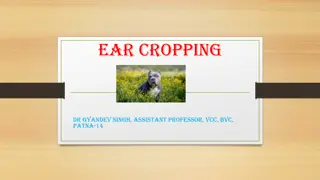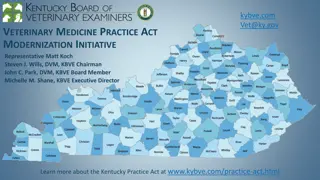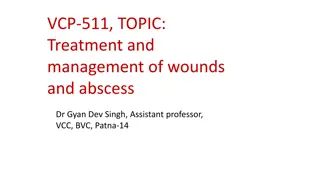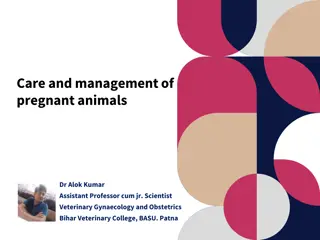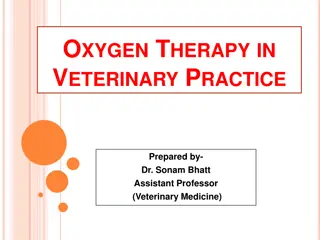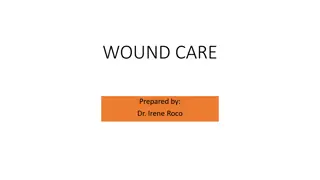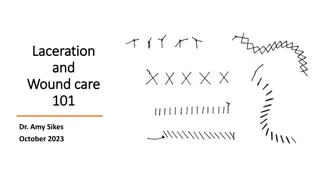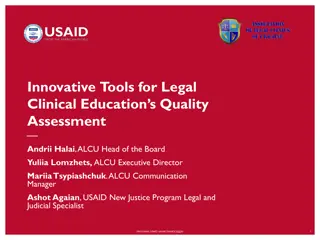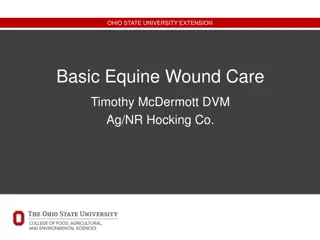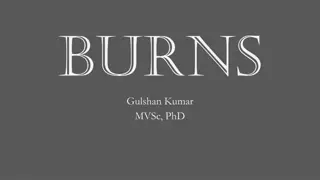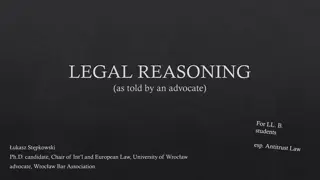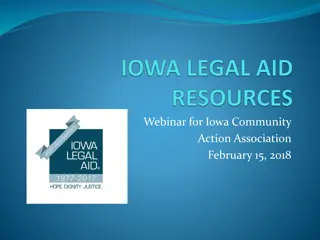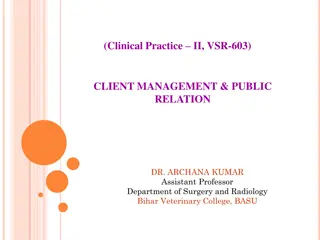Understanding Vetero-Legal Aspects of Wounds in Veterinary Practice
Explore the classification and characteristics of bruises, abrasions, incised wounds, lacerated wounds, punctured wounds, and gunshot wounds in veterinarians' work. Learn about differentiating ante-mortem and post-mortem bruises, age determination based on color changes, and features of various wound types.
- Vetero-Legal Wounds
- Veterinary Practice
- Wound Classification
- Forensic Veterinary Medicine
- Injury Analysis
Download Presentation

Please find below an Image/Link to download the presentation.
The content on the website is provided AS IS for your information and personal use only. It may not be sold, licensed, or shared on other websites without obtaining consent from the author. Download presentation by click this link. If you encounter any issues during the download, it is possible that the publisher has removed the file from their server.
E N D
Presentation Transcript
Vetero-Legal Aspects of Wounds Unit-7 Dr. Vivek Kr. Singh & Dr. Pallav Shekhar Assistant Professor Bihar Veterinary College
The classified as- Bruises (Contusions) Abrasions Incised wounds Lacerated wounds Punctured wounds Gunshot wounds vetero-legal wounds may be
BRUISES or CONTUSIONS Bruises or contusions are injuries which are caused by a blow from a blunt weapon Characterised by painful swelling and crushing or tearing of the subcutaneous tissue without dissolution of integrity of skin
Age: Age of the Bruise is determined by the colour change on the skin These colour change start from periphery and ends to the centre The colour is red and turns blue or bluish black with in 3 days, become greenish on 5th -6th day and yellow from 7-12th day
Difference between Ante mortem and Post mortem Bruises Swelling and Colour Changes Absent
ABRASIONS Abrasions are injuries involving loss of the superficial epithelial layer of the skin Produced by a blow or a fall on a rough surface. Abrasions caused during life appear as bleeding surface and soon converted into reddish brown crust or scab Abrasions produced after death are dark brown and there is complete absence of bleeding
Incised wound It is produced by sharp cutting instruments It is mostly intentional Character: Always broader than the edge of the weapon It is some what spindle shaped with gapping Its edges are smooth, even, clean cut, well defined and usually everted Bleeding is intensive
Lacerated wound These wound do not corresponds in shape or size to the object producing them. Their edges are torn, jagged, irregular and swollen or contused
Punctured wound They are popularly called stab and are termed as penetrating wound. Character: The wound is wedged shaped The depth of a punctured wound is much larger than its length or width There may be little external haemorrhage, but profuse internal haemorrhage.
Firearm wounds/Gunshot wounds The appearance of these wounds depend upon The kind of the weapon employed The nature of projectile The velocity of the projectile The range at which the weapon was fired The part of body struck
Conical bullet produces punctured wounds If fired from close, then entrance is lacerated, surrounding skin is blackened and tattooed No blackening or scorching is found if the fire arm is discharged from distance of more than 4 feet Timing of Firing: Black discharge of potassium sulphide mixed with carbon is found in the barrel of the firearm. Upto 5 -6 hrs it form strong alakaline solution
Simple or Grievous or Dangerous injury A simple injury is one which is neither extensive or serious and which heals rapidly without leaving any permanent deformity or disfiguration Grievous Injury Emasculation Injury at eye Injury at ear, joint, Head or face, fracture or dislocation of bone
Difference between Ante mortem and Post mortem wound Haemorrhage- Blood not easily washed Retraction of the edge of the wound Signs of inflammation and reparative process. Easily washed out. Do not gap Absent Difficult fractured No callus formation to Easily fractured Callus formation






